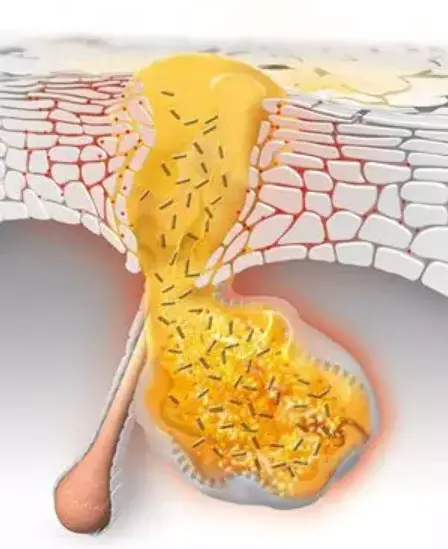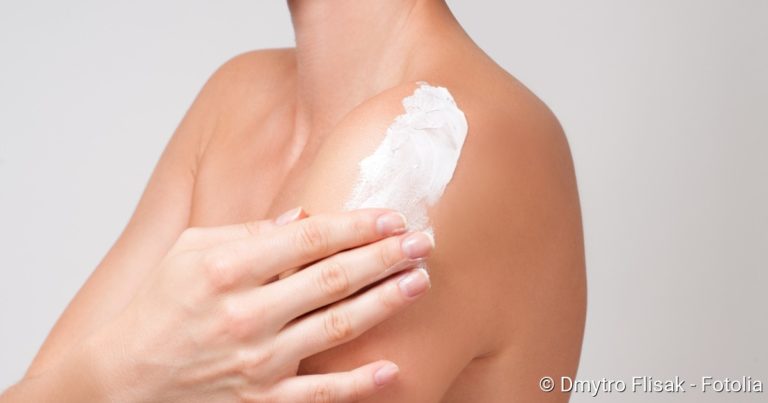Cracked and rough skin on the body
Cracked and rough skin on the body
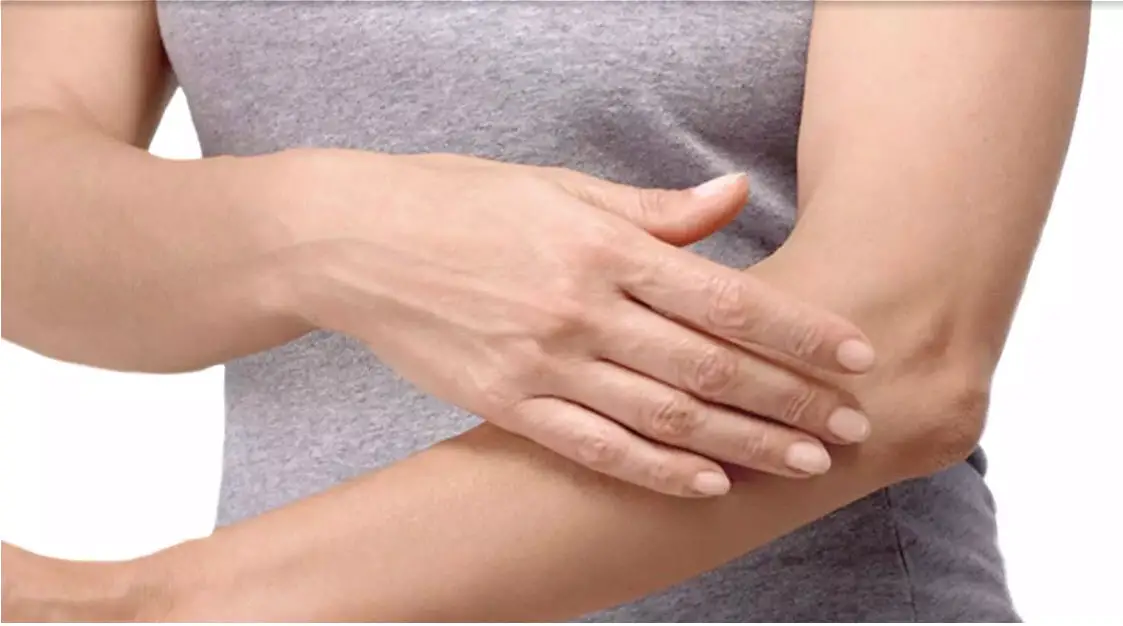
The skin is not only the largest organ of the body, it also plays an important role in regulating body temperature and protecting the body from infections. However, some parts of the body are more prone than others to dryness and cracking. This can lead to the skin no longer being able to fully perform its tasks. Good daily skin care with products specifically designed for rough and chapped skin can help the skin to become smooth, supple and healthy again.
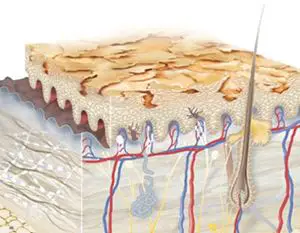

Signs of dry cracked skin
The symptoms of dry skin develop gradually in a gradual process:
- Dry skin tightens and can appear slightly to moderately rough
- Although these first signs of dry skin are not particularly unpleasant, the signs can become more severe if they are not observed and treated.
- Very dry skin can be accompanied by a strong feeling of tension, severe roughness, scaling, painful cracks (rhagades) and itching.
- The skin is very tight and in many cases shows flaky skin.
- Extreme dryness can cause the skin to contract and become brittle, resulting in cracks in the skin. This is particularly the case where the skin is subjected to additional stress during increased movement, for example on the soles of the feet and the elbow joint. Very dry skin is also more susceptible to the penetration of germs and can therefore become inflamed more easily.
Signs of dry body skin
- Extremely strong feeling of tension
- Extreme roughness
- Cracks or fissures
- Intense itching
- Body parts with dry and rough skin
- The skin becomes rough and cracked when the dryness penetrates into the deeper layers of the skin.
- The soles of the feet quickly become dry and cracked.
- The skin on the hands becomes rough through frequent washing. Cracks appear especially on the knuckles of the fingers, as the skin is tight and can tear quickly when stretched. Learn more about the causes and care of dry hands.
- The skin on the feet, especially the soles and heels, often becomes dry. This results in rough or even cracked skin, which can be unpleasant and in pronounced cases also hurts and becomes inflamed. The skin on the heels is thicker so that it is sufficiently resilient to pressure and movement when walking or running.
- The lips also tend to be dry. Painful cracks can form on the lips, especially in acne patients under drug therapy.
 |
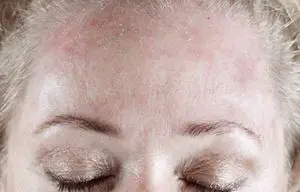 |
Frequent hand washing can be problematic for dry skin as it can crack at the knuckles of the fingers.
Dry facial skin can appear rough and even flaky.
Diseases and their effects on the body skin.
Dry skin (the medical term is xerosis: from the Greek, xero means dry and osis disease) is a general classification under which any form of dry skin falls, regardless of internal or external causes or severity. However, there are also skin diseases in which dry, rough and cracked skin is a symptom: In the case of psoriasis and neurodermatitis on the face or body, inflammation, redness, scaling and severe itching can also be a burden
- Neurodermatitis mainly affects children. The skin is initially irritated and inflamed mainly in the face and head area, in older children mainly in the back of the knees and the crook of the arm.
- Psoriasis often results in areas with dry, hardened and itchy skin that can appear all over the body.
- Type 1 and type 2 diabetes can also cause dry, rough skin with itching. You can read here how those affected can still feel all-round.
- Keratosis pilaris (also known as grater skin) is a cornification disorder of the hair follicles that occurs mainly on the upper arms and legs. There, numerous small white or slightly reddened spots, reminiscent of goose skin, form. The skin feels rough and uneven.
- At Ichthyosis is also a cornification disorder of the skin, which is caused by defects in the genetic material. Although the horny layer is very thickened, it cannot bind enough water and therefore suffers constantly from high moisture loss.
- Some skin diseases with dry skin can cause symptoms such as redness, scaling and itching.
![]()
If a symptom is worrying you or you are unsure, you should consult your dermatologist.
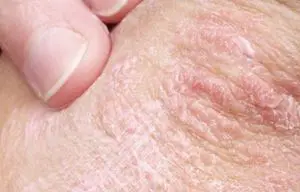
Causes and triggers
The causes of brittle skin
The causes of rough and cracked body skin are influenced by internal and external factors. They range from unsuitable skin care and other environmental factors to diseases such as neurodermatitis and psoriasis.
Dehydration of the skin occurs in different stages:
- The skin becomes dry when the natural skin barrier is damaged by a lack of the skin’s own lipids, allowing the moisture in the skin to evaporate more.
- This leads to an increasing loss of moisture. The additional lack of Natural Moisturing Factors (NMF), which bind moisture in the skin, causes the upper layers of the skin to dry out. A lack of natural moisturizing factors (NMF), which bind the moisture in the skin, leads to dehydration of the upper skin layers.
- Dry skin becomes rough and cracked when the dryness penetrates into the deeper layers of the skin.
External factors such as climatic conditions can increase dryness as the skin’s ability to retain moisture decreases. The use of unsuitable care products can also promote skin dehydration.

Environment
- Adverse weather conditions – hot, cold or dry air affects the skin barrier.
- Seasons – the symptoms of dry skin usually worsen in autumn and winter.
- Ultraviolet light (UV) also dries out the skin and can also intensify the skin aging process, which in turn causes increasing skin dryness.
Skin care
- Frequent washing, long, hot baths or too extensive showers dissolve the lipids from the protective film of the skin.
- Unsuitable daily skin care – It is particularly recommended not to use aggressive soaps, as they remove the protective lipids from the skin. Instead, mild cleansing and care products specially developed for dry skin should be used regularly.
Medication
Dry skin is a side effect of many medications. Common medications with this side effect are e.g. diuretics, as they cause an increased loss of fluid and the moisture content of the skin also depends on the body’s water balance. Antibiotics and oral acne medication can also lead to dry skin as a side effect.
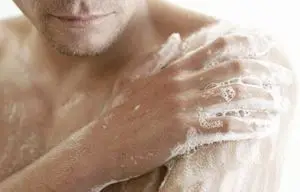
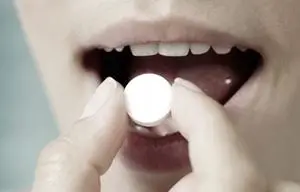
![]()
Contact your doctor or pharmacist if you are concerned that a medication could cause dry skin.
Genetic influences
The moisture balance of the skin is also determined by genetic factors. Some people have rather oily skin, others dry skin. The respective skin type is inherited, even though a child does not necessarily have to have the same skin type as its parents. In addition, fair-skinned people seem to have a greater tendency to dry skin than dark-skinned people. A hereditary predisposition is also frequently found in diseases such as neurodermatitis, psoriasis and ichtyosis.
Hormonal influences
Changes in the hormone balance, especially in oestrogen and testosterone levels, can affect skin moisture and lipid content. This is particularly noticeable after the menopause or during pregnancy.
Age
With increasing age, the number of sebaceous and sweat glands in the skin decreases, resulting in less sweat and lipids being produced. The water content of the skin and its ability to bind moisture also decreases. These factors lead to dryness, which in turn promotes skin aging and the formation of wrinkles and fine lines. This is referred to by the general term age-related drought.
Nutrition
Like any other organ, the skin needs several important nutrients to function properly. These include vegetable oils and vitamins, especially vitamin C and vitamin E.


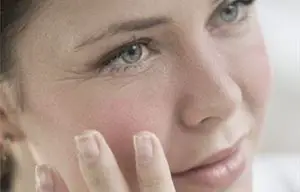
Further influencing factors
Other factors for rough skin
Factors that disturb the moisture balance of the skin and can lead to rough and cracked skin are the following:
Aggressive soaps wash out the skin’s own lipids, moisture is lost and the skin becomes rough and chapped. Good daily skin care is therefore essential for the prevention and treatment of rough and cracked skin. The affected area should be creamed regularly with a suitable moisturizing cream. When the skin is clean and still slightly moist, for example after bathing or showering, this is the best time to moisturize it. For very dry, rough and cracked skin, care products with active ingredients that also restore the moisture balance in the deeper skin layers are recommended.

Frequent washing is also an additional factor contributing to rough and dry skin. Baths and showers should neither be too hot nor too long, as this will wash out the lipids and natural moisturizing factors from the skin. The skin is then less able to bind the moisture. The cleansing products should be so gentle that they do not remove the skin’s own lipids.

In order to restore lost lipids and moisturizing factors to the skin and restore the moisture balance, skin care products for dry skin should be used.

Weather, seasons and solar radiation
The change of seasons is a common cause of rough and cracked dry skin. During the winter months, the skin is exposed alternately to cold weather and dry heating air. This increasingly dries out the skin, making it rough and cracked. If these cracks are not treated, they can deepen and become inflamed.
But even in the hot summer months, too much sunlight can dry out the skin. Sunburned skin cannot fulfil its protective function as well as healthy skin and therefore dries more quickly. In order to prevent feelings of tension, roughness and cracks, moisturising sunscreens without fragrances and dyes should be used.
Occupational risks
In certain professions the danger of dry skin is greater. It can then become very rough and cracked. These are professions in which work sometimes has to be carried out under very stressful conditions, for example in very hot or cold weather (farmers, fishermen, construction industry) or in professions that involve frequent hand washing and disinfection (doctors, nurses, hairdressers). Some professions require frequent hand washing. This can be problematic for dry skin.
The skin loses moisture through exposure to the sun and dry skin becomes even drier. In addition, the UV rays can cause long-term damage to the skin.
Some professions require frequent hand washing. This can be problematic for dry skin.
Dehydration
The skin is supplied with moisture by the body and is therefore dependent on the body’s water balance. In case of dehydration, the skin’s moisture supply is reduced, which can contribute to dry skin. Older people are particularly prone to dehydration, as the feeling of thirst decreases with age.
Smoking
Cigarettes contain many toxins, including nicotine, which can significantly worsen blood circulation. As a result, the metabolism in the skin decreases and the supporting fibres in the connective tissue lose their elasticity. This can cause the skin to age and dry out prematurely.
![]()
For recommendations on which products are best suited to your individual skin needs, please visit our skin care consultant. After just a few clicks you will find the Eucerin products that are optimally suited to you and your skin.
Care recommendations
What to do with brittle and cracked skin?
Avoiding the additional factors
Besides a good daily cleansing and skin care, factors that contribute to dry skin should be avoided. This can reduce the effects of dry skin and the need for treatment.
- Avoid dry air – spend more time indoors in hot or cold climates and use a humidifier during the heating period
- Do not take long hot showers or baths – quick, lukewarm showers instead of long, hot baths.
- Wear gloves when washing up, so that hot water and aggressive detergents do not reach the skin. If you have frequent contact with water or detergents, it is worth protecting your hands with gloves.
- Wear clothing made of natural materials (e.g. cotton and silk) that do not irritate the skin. Although wool is a natural material, it can irritate the skin and should then be avoided. Clothing made of natural materials such as cotton and silk is best for the skin, as these materials do not irritate the skin additionally.
- If possible, use a detergent without dyes or fragrances, as these can remain in the clothing after washing and can irritate dry skin.
- Drink plenty of water.


In order to improve dry skin conditions, daily skin care is necessary that does not damage the skin barrier even more but stabilizes it. The supply of natural moisturizing factors such as urea is also useful to restore the skin’s moisture balance. Ideally, the lack of other substances that are important for regulating the distribution of moisture in the deeper skin layers should also be compensated.
Cleaning of rough and dry body skin
As a disturbance of the skin barrier is the primary cause of dry and rough skin, the cleansing should be so gentle that the skin’s own lipids are not removed. Eucerin UreaRepair ORIGINAL Washing Fluid 5% is a very mild cleansing fluid that has been specially developed for dry to very dry body skin. It has been enriched with Natural Moisturing Factor (NMF), gently cleanses without drying out the skin and binds moisture in the skin. It is also suitable for diabetes, psoriasis, keratosis pilaris and ichthyosis.

Wet skin should not be rubbed dry with a towel, but only dabbed dry.
Moisturizing care for rough and dry body skin
The most important requirement of a moisturizing care for dry skin is to restore the moisture balance in the upper layers of the skin.


Urea and lactate: Natural Moisturing Factors (NMF) attract moisture and bind it in the stratum corneum, the upper layer of skin. Very dry skin, which is rough and chapped, needs a higher content of these natural moisturizing factors. Care products for dry and very dry skin should generally contain at least 5 or 10% urea.
Ceramides promote the regeneration of the skin’s own lipids. This stabilizes the epidermal protective barrier, less water evaporates through the skin and moisture loss is reduced.
Gluco-Glycerol stimulates the aquaporins in the skin and thus supports the natural flow of moisture into the upper layers of the skin. The moisture balance in the upper layers of the skin depends on sufficient moisture from the lower layers reaching the surface. Therefore, the moisture balance in the lower skin layers should first be restored in order to improve the general skin moisture.
To relieve the symptoms of dry skin, regular skin care is recommended. When the skin is clean and still slightly moist, for example after bathing or showering, this is the best time to moisturize it.
Protection of dry body skin against sun rays
Since UV light accelerates skin aging, which in turn often leads to dry skin, it is recommended:
- reduce the exposure to the sun by wearing protective clothing.
- to apply sunscreen before going outside.
- To use a sunscreen product that filters UV radiation and contains additional active ingredients that moisturize the skin.
- The sunscreen product should not contain any skin-irritating dyes or fragrances, as dry skin is easily irritated.
Eucerin sunscreen for dry skin with UV filters and the antioxidant Licochalcone A offers protection against UV-induced free radicals and premature skin aging. The UV filters meet the requirements of EU and COLIPA.

Eucerin Sun Lotion Dry Skin SPF 30/50+ was developed especially for the needs of dry skin.
